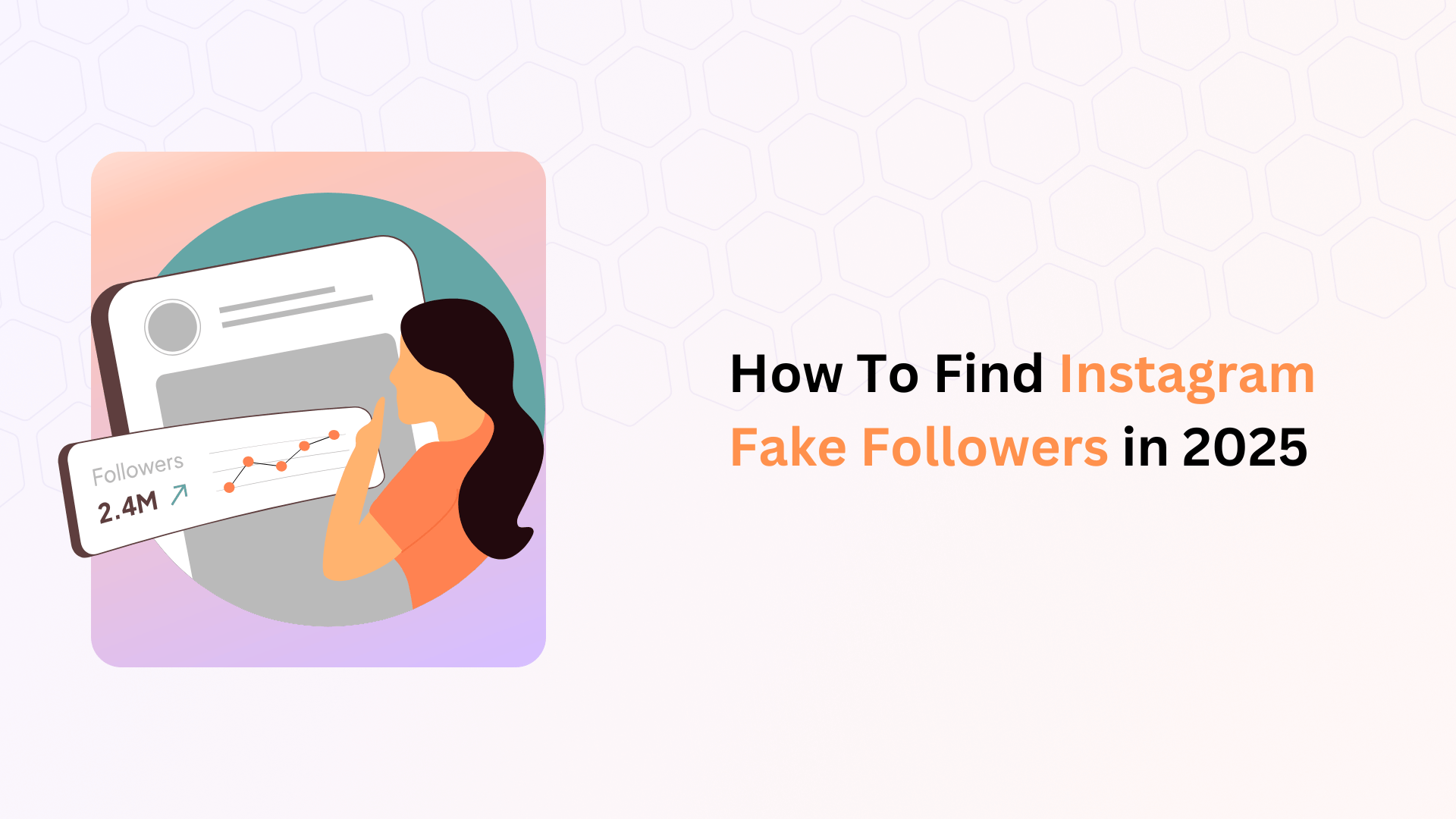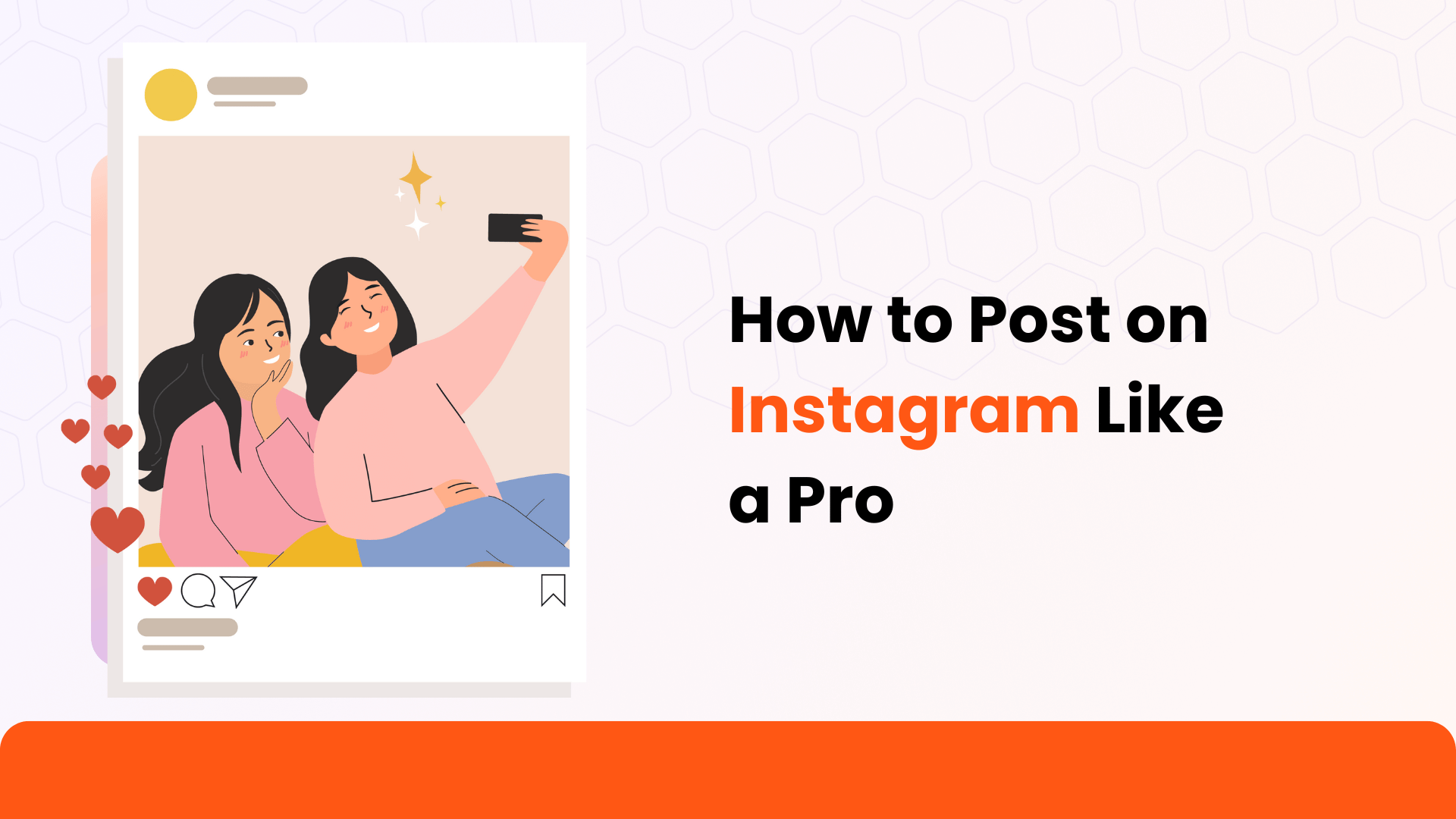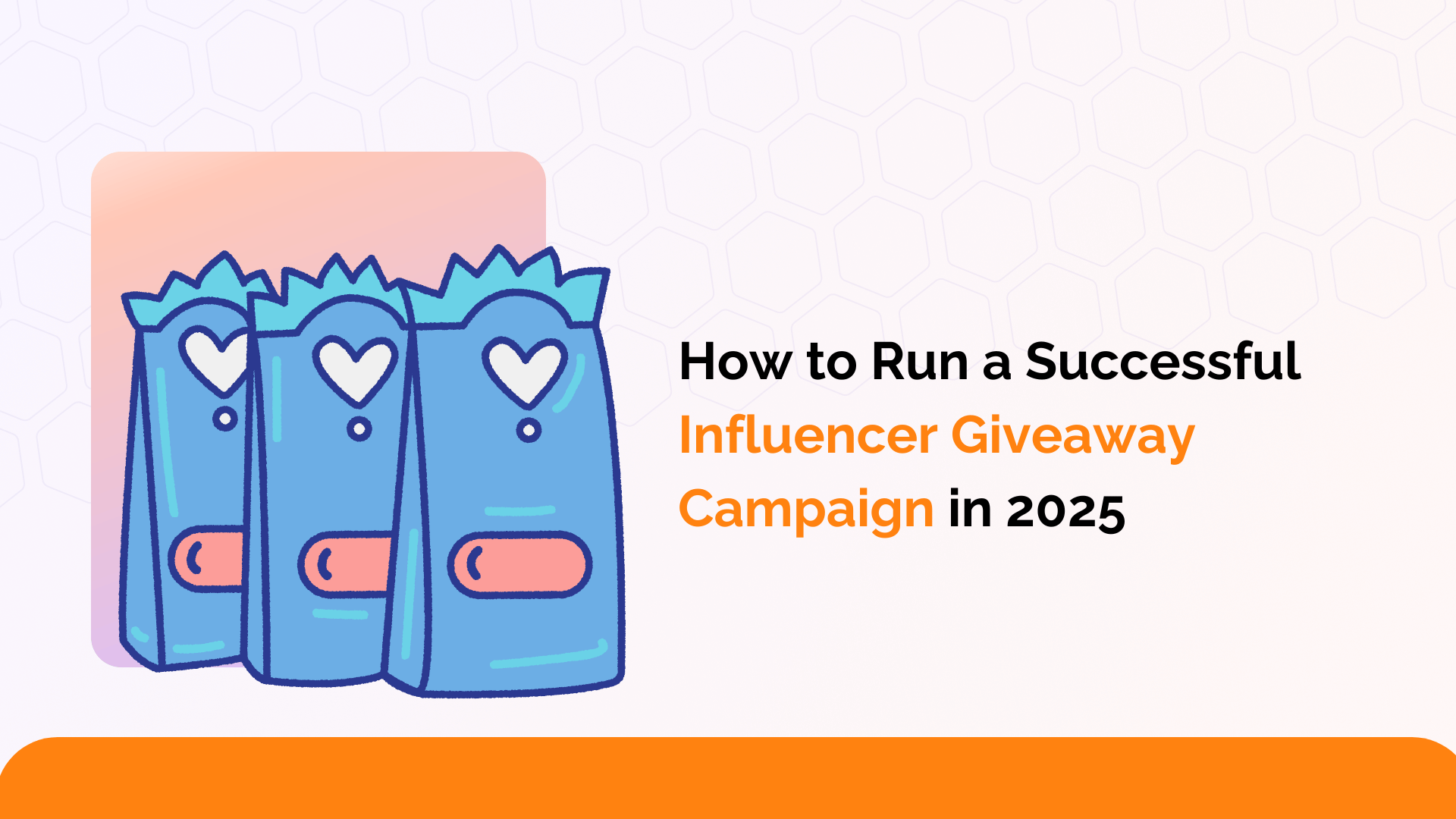Influencer marketing is hot right now, but it’s tough to know who to trust. Many influencers inflate their numbers with fake followers like bots and inactive accounts. This tricks brands into thinking they’re reaching a huge audience, but in reality it’s just a bunch of ghosts.
Think of it like this: You’re at a party, and you see someone with a massive crowd around them. You assume they’re popular and influential. But what if half the people there are just mannequins? You’d feel pretty let down, right? That’s what happens to brands when they work with influencers who have fake followers.
This article will help you spot those fake followers on Instagram, show you tools to uncover the truth, and explain why it matters so much for your brand’s success.
Why Fake Followers Are a Problem for Brands
The influencer marketing industry, but this growth has been paralleled by an increase in fraudulent practices. Fake followers not only distort an influencer’s metrics but also:
The influencer marketing industry is booming right now and is projected to grow exponentially, but sadly fake followers are a growing problem. These fake accounts not only make an influencer’s numbers look better than they really are but they also hurt the whole industry by tricking brands and consumers.
- Reduce Campaign ROI: Let’s be real, bots don’t shop. When influencers have a bunch of fake followers, your brand’s posts get lost in the noise. This means fewer people actually see and click, which hurts your sales and wastes your precious marketing money. It’s like throwing a party and only inviting mannequins, no one’s going to buy anything!
- Damage Brand Reputation: Let’s be real, partnering with influencers who buy fake followers is a major credibility killer for brands. It’s like trying to build a house on quicksand it’s bound to crumble.
- Spotting the Fakes: Consumers are super savvy these days. They can spot a fake from a mile away. And when they see a brand teaming up with an influencer who’s playing the numbers game, they’re not going to be impressed. In fact, they’re more likely to call the brand out for being part of the problem. No one wants to be associated with something that feels inauthentic, right?
- Mislead Marketing Strategies: Imagine building a house without a proper blueprint. You’d probably end up with crooked walls, misplaced windows, and a whole lot of wasted time and money. That’s kind of what happens when your marketing decisions are based on faulty information. You might be targeting the wrong people, spending money on ads that don’t work, and struggling to figure out if your campaigns are actually achieving anything. In simpler terms, bad data leads to a messy and ineffective marketing strategy.
- Contribute to Misinformation: Fake accounts are like those pesky weeds in your garden they spread misinformation like wildfire! This creates a real mess, messing with people’s understanding of the world and weakening confidence in social media. It’s like trying to have a conversation with someone who’s constantly making things up you start to question everything they say, right?
According to a recent report, nearly 15% of social media accounts are fake and the “follower factory” industry continues to thrive, offering influencers “authentic-looking” fake followers for a price.
How to Spot Instagram Fake Followers
Identifying fake followers requires a combination of analytical tools and human insight. Here are some signs:
1. Low Engagement Rates
Fake followers rarely interact with posts. If an influencer has a high follower count but very few likes, comments or shares, it’s a red flag. For instance, an influencer with 100,000 followers generating only 100 likes per post likely has a significant number of fake followers.
Pro Tip: Calculate the engagement rate by dividing the total engagements (likes, comments, shares) by the total followers and multiplying by 100. An industry standard is around 2-3% for Instagram. For micro-influencers, this rate is usually high between 5-7%.
2. Irrelevant Comments
Ever scrolled through an influencer’s post and seen a sea of comments like ‘Amazing!’ or ‘Love it!’ that seems to come out of nowhere? Yeah, those are probably bots at work.
Real people usually add a bit more personality to their comments, right? They might mention something specific in the photo, ask a question, or share their own related experience. But bot comments are often generic and don’t really add anything to the conversation. It’s like they’re just trying to fill the space, you know?
If you start noticing the same kind of bland comments popping up on every post, that’s a pretty good sign that the influencer might be boosting their engagement with some artificial help.
3. Follower-to-Following Ratio
Think about it this way, fake accounts are like those people at a party who talk to everyone but no one talks back to them. They follow thousands of people, but hardly anyone follows them back. It’s a bit of a one-sided conversation, isn’t it?
On the other hand, if an influencer suddenly explodes in popularity overnight and their follower count skyrockets but you don’t see a matching jump in likes, comments and shares, it might be a red flag. It’s like a movie with a huge audience, but nobody’s clapping or cheering.Something’s definitely off.
4. Generic Profile Pictures and Bios
Most fake profiles are like cardboard cutouts. They lack any real personality. Generic avatars? Check. Bios filled with random hashtags and links to shady websites? Double check!
For example, you see a profile with a bio like ‘DM for promotions’ or ‘Crypto trader’. Those are often red flags for a fake account. It’s like they’re trying to scream ‘I’m not real!’ from the rooftops.
5. Rapid Follower Growth
Like watching a plant grow, real growth happens steadily, little by little. You don’t suddenly see a giant sprout overnight, right? That’s how authentic social media growth should be gradual and consistent.
Suddenly seeing a huge jump in followers? That’s a red flag. It’s like someone magically made your plant explode in size. Chances are, those new followers aren’t real people but bots or accounts bought to inflate the numbers.
Luckily, there are tools that can help you track your follower growth over time. Think of them like a growth chart for your social media. By keeping an eye on these charts, you can easily spot any sudden, unnatural spikes that could signal trouble.
6. Inactive Accounts
An influencer’s profile with zero posts or barely any activity, what comes to your mind? That screams ‘bot’ to me. It’s like walking into a restaurant and seeing empty tables and no staff, something’s definitely off.
And let’s be honest, accounts that post once in a blue moon or never seem to share anything in their stories? That’s a red flag too. It’s like they’re trying to hide something and that’s not exactly inspiring trust, is it?
How Tools Can Help
Advanced analytics tools have transformed the way brands evaluate influencers. These tools go beyond surface metrics, offering detailed insights into audience authenticity, engagement patterns and growth trends. By using these insights marketers can:
- Identify Red Flags: Tools help detect abnormalities in follower growth and engagement rates, signaling potential fake followers.
- Save Time: Automated analysis streamlines the screening process, allowing brands to focus on strategy rather than manual audits.
- Improve ROI: By ensuring collaborations with authentic influencers, brands can achieve better engagement and conversions.
- Build Long-Term Trust: Reliable tools ensure transparency, fostering trust between brands and their audience.
Fake follower checker tools, including those with AI-powered capabilities, are at the forefront of helping marketers maintain the authenticity of their influencer collaborations. These tools are indispensable for modern marketing strategies.
The Impact of Fake Followers on Brand Campaigns
1. Skewed Metrics
Brands rely on metrics like impressions and engagement to gauge campaign performance. Fake followers manipulate these metrics, leading to misguided decisions. For example, a campaign designed to reach a million authentic users may only reach 800,000 due to 20% fake followers.
2. Loss of Trust
Audiences are becoming increasingly aware of fake followers. Partnering with influencers who lack authenticity can lead to losing consumer trust. Negative press surrounding such collaborations can further damage a brand’s image.
3. Financial Loss
Every rupee spent on campaigns involving fake followers is essentially wasted. For example, a campaign targeting an audience of 1 million followers, of which 20% are fake, results in a 20% budget loss. Additionally, brands lose potential revenue due to ineffective targeting.
4. Algorithmic Impact
Instagram’s algorithm prioritizes authentic engagement. Accounts with fake followers often see reduced visibility, affecting campaign reach. Lower organic reach can lead to higher costs for paid promotions.
5. Missed Opportunities
Fake followers manipulate influencer selection processes, causing brands to overlook authentic influencers who could drive genuine engagement and conversions.
How to Protect Your Campaigns
To make sure your marketing campaigns don’t get side tracked by fake followers, brands need to be smart and adopt a proactive approach:
1. Set Clear Benchmarks
Establish minimum engagement rates and audience authenticity thresholds when shortlisting influencers. For example, a brand might only work with influencers whose engagement rates exceed 3%.
2. Use Third-Party Tools
Incorporate tools like those mentioned above to vet influencers thoroughly before collaboration. Combining multiple tools can provide a comprehensive view of an influencer’s audience quality.
3. Request Detailed Analytics
Ask influencers for audience insights and engagement metrics. Authentic influencers will provide this information readily. Red flags include influencers who are unwilling to share such data.
4. Prioritize Long-Term Partnerships
Building long-term relationships with trusted influencers reduces the risk of fake followers. Influencers invested in maintaining their credibility are less likely to engage in fraudulent practices.
5. Educate Your Team
Train your marketing team to identify red flags and use detection tools effectively. Workshops and training sessions can help keep your team updated on the latest trends in influencer fraud.
Case Studies: Brands Fighting Fake Followers
Case Study 1: Unilever’s Stand Against Fraud
Unilever made headlines by announcing a crackdown on influencers with fake followers. By prioritizing authenticity, the brand enhanced its campaign effectiveness and reputation. The move also inspired other brands to adopt similar practices.
Case Study 2: Instagram’s Purge of Fake Accounts
In 2018, Instagram took significant action against fake accounts, deleting millions of bots and reducing follower counts for many influencers. This move underscored the platform’s commitment to authenticity and set a precedent for social media platforms.
Case Study 3: Nike’s Micro-Influencer Strategy
Nike shifted its focus to micro-influencers with highly engaged audiences, bypassing the fake follower problem entirely. This strategy resulted in higher ROI and more meaningful customer interactions.
The Future of Influencer Marketing
As influencer marketing evolves, brands must prioritize authenticity over follower count. In 2025 and beyond, the focus will shift towards:
- Micro-Influencers: Smaller audiences often mean higher engagement and authenticity. Brands are increasingly collaborating with influencers who have fewer than 50,000 followers.
- AI-Powered Analytics: Advanced tools will make it easier to detect fake followers and evaluate influencers. Machine learning algorithms can analyze behavioral patterns to identify bots.
- Transparent Practices: Influencers will increasingly disclose collaborations and metrics, fostering trust. Regulations may also require stricter reporting standards for sponsored content.
- Performance-Based Partnerships: Brands will shift towards paying influencers based on actual performance metrics, such as conversions and engagement, rather than follower counts.
- Community Building: Authentic engagement will take precedence, with brands focusing on creating communities rather than chasing viral moments.



